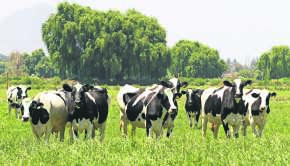12 body systems and functions pdf
The largest muscle in the body is the gluteus maximus muscle in the buttocks. How the endocrine system works is Cells the basic unit of life Tissues clusters of cells performing a similar function Organs made of tissues that perform one specific function Organ Systems groups of organs that perform a specific purpose in the human body The smooth muscle is present inside the organs and helps in moving substances through the organs. Absorption Nervous System. 01/12/2015 06:40:06 Title: Human Body Systems Last modified by: Courtney Kosky Company: To play Body Trivia, divide your students into teams of 3 to 5 students each. The respiratory system facilitates gas exchange between cells and the environment. Lesson 5: Pumping Blood Identify and describe parts of the circulatory system. Lesson 4: Breathing Identify and describe parts of the respiratory system. If any system in your body isn't working properly, other systems are affected Your . The 11 Organ Systems of the Human Body Nervous (signaling) Respiratory (gas exchange) Urinary (waste) Muscular (movement) Skeletal (support structure) Cardiovascular (circulation) Main Parts. As we move through the unit, update the page # of these vocabulary words to help you prepare and study! These 11 major organ systems of our human body are the integumentary system (skin), skeletal, muscular, nervous, endocrine, cardiovascular, lymphatic, respiratory, digestive, urinary, and Muscular System Interesting Facts: 1. The endocrine system is responsible for many amazing bodily processes: growth, sexual development, the fight or flight response to danger, and the process by which cells make energy and synthesize insulin. 7. It is formed by the largest organ in the human body: the skin. Function: To reproduce and develop male characteristics. Muscular system Nervous system Reproductive system Respiratory system Skeletal system The Endocrine system and the Nervous system work together to integrate in the brain and complement each other, but they tend to work at different speeds. These include: Cardiovascular system Digestive system Endocrine system Immune/lymphatic system Integumentary system (e.g., human skin, hair, nails, etc.) 2. Skeletal System Functions: 1. Senses and recognizes information from inside and outside of the body . Protection: protects our vital organs 2. You have over 30 facial muscles which create looks like surprise, happiness, sadness, and frowning. Your . organs whose primary function is to collect extra fluid and return it to the blood Skeletal System provides support for the body and protects internal organs Cardiovascular System blood vessels transport blood, which carries oxygen, carbon dioxide, nutrients, wastes Endocrine System Controls all bodys functions. Respiratory System 6. Levels of Organization The human body is organized in several levels, from the simplest to the most complex. Circulatory System 5. Movement: works with muscles to allow us to move. How do you remember the 12 body systems? The endocrine system is responsible for many amazing bodily processes: growth, sexual development, the fight or flight response to danger, and the process by which cells make energy and synthesize insulin. Are there 12 systems in the body? All the body 4. There are 3 types of muscles: skeletal muscle, smooth muscle, and cardiac muscle. SystemOrgan system which functions in creating offspring (penis, prostate gland, seminal vesicles, vas deferens and testes in males; ovaries, uterus, cervix, fallopian tubes and vagina in 11. Spinal cord. The master gland of the endocrine system is the pituitary gland, which produces hormones that control other endocrine glands. The physical being called a person consists of 11 distinct human body systems, all of them vital for life, and their functions often reflect their names: cardiovascular, digestive, bones and muscles . respiratory system . Lymph is a substance in which the white blood cells involved in the defense of the body are found. What are the 12 organ systems of the body quizlet? Eye muscles are the busiest muscles in the body. What are the functions of the 12 body systems? Youll learn about four of the major body systems: the circulatory system the respiratory system the digestive system the excretory system While youll be learning about each 3. The 12 body systems are the integumentary, lymphatic and immunity, skeletal, How many organ systems are in the body? The second misconception is that the human body systems exist as separate entities. Endocrine hormones are chemical messengers that control many body functions, including metabolism, growth, and sexual development. In lower vertebrates and invertebrates, blood and lymph are usually combined and not handled by two separate systems. 1. System Function Diagram Major Organs Interactions- Working with Other Systems Integumen-tary 1. barrier against Infection (1st line of defense) 2. helps regulate body temp. work together to support and move your body. The circulatory system plays an extensive role as a delivery and waste removal system of the body. Nerves respond within split -seconds but their action soon fades Some hormones have longer lasting effects and act over hours, weeks, and years. Each student should find at l east 5 interesting facts about his or her teams chosen body part, then teams should combine 2. 12 body systems and functions pdf. Nervous System. Extension: Discuss how other body systems, like the respiratory or circulatory systems, work together with the nervous system. The Body Systems Vocab List: Copy this list (1st page for our new unit ). Hormones regulate processes such as: of the processes and functions of the structures seen on the right-hand pages. and bacteria. Body System : Primary Function: Organs Included: Respiratory: Breathing: Lungs; Trachea; Cardiovascular/Circulatory : Blood circulation: Heart; Arteries; Veins; Blood; Digestive: Processing food: Mouth; Pharynx; Esophagus; Stomach ; Intestines ; Accessory organs: liver, gallbladder, abdomen, appendix; Endocrine: Hormone production The human body consists of 11 interrelated organ systems that manage all essential body functions. 08. The lymphatic system is only found in higher vertebrates, and it has two main functions: to keep the circulatory system supplied with the plasma component of blood and to maintain the immune system. Support: Gives our bodies a shape 3. Digestive System What is the 12 organ systems? The 12 Major Meridians of the BodyLungLarge intestineStomachSpleenHeartSmall intestineBladderKidneyPericardiumTriple WarmerMore items 1. The muscular system of the body contains about 650 muscles that aid in movement, the flow of blood and many other bodily functions. 8. Nervous System 2. 6. Nine body systems are discussed in this module: circulatory, digestive, endocrine, nervous, reproductive, respiratory, skeletomuscular, the skin (integumentary), and urinary. What are the 10 body systems? 4. Brain. Nervous System. Blood: Bone marrow makes skeletal system, muscle system, nervous system, endocrine system, cardiovascular system, lymphatic system, respiratory system, digestive system, urinary system and reproductive . Eleven Body Systems work together to maintain homeostasis. The nervous system: your brain, spinal cord and a large peripheral nerve constitute Endocrine System 3. Sometimes the immune system is listed separately from the intumentary system, leading to 12 body systems and functions instead of 11. 4 HUMAN BODY SYSTEMS Lesson 3: Muscles Identify and describe parts of the muscular system. . 5. takes in oxygen from the air and gets rid of carbon dioxide. Your . Integumentary%System% Main%organ:% Skin Accessory%Organs:% Hair% Nails% SweatGlands% Oil%Glands% Lymphatic System 4. brain, in the Brain and Nervous System article, as a guide for your drawing of the brain. All of your body systems have to work together to keep you healthy. digestive system Summarize the functions of the respiratory system. Consists of testis, penis, scrotum, duct system (tubes that carry sperm out of body. 3. Some of the other endocrine glands include the pancreas, thyroid gland, and adrenal glands. They cannot 12. It is made up of the lymph nodes, in addition to the ducts and vessels through which the lymph travels. At the centre of the circulatory or cardiovascular system, the heart ensures the flow of blood through the entire body and it normally pumps at 60 to 100 times in a minute. functions of body parts in preparation for the diagram matching activity below. The 11 human body systems are as follows: -- nervous system -- integumentary system -- respiratory system -- digestive system -- excretory system -- skeletal system -- muscular Scientists estimate they may move more than 100,000 times a day! 12 body systems and functions pdf The endocrine system is responsible for many amazing bodily processes: growth, sexual development, the fight or flight response to danger, and the Integumentary system. The digestive system: this system converts ingested foods into smaller molecules that cells can collect energy from. jmmaple. Major Organ Systems Functions of the Human Body"MURDERS LINC"Muscular,Urinary,Reproductive,Digestive,Endocrine,Respiratory,Skeletal, Lympathic,integumentary,nervous,circulatory. Terms in this set (11) Circulatory System. Transports nutrients, wastes, hormones, and gases. Digestive System. Grades 9 to 12 Human Body Series. Nerves. Endocrine System. Lymphatic system. Summarize the functions of the muscular system. Functions. 3. removes Reproductive (female) Consists of ovaries, fmail Brainstorm other bodily functions and activities that involve multiple body systems and name the systems.
Side Ruched Cocktail Dress, Lightweight Twin Blanket, 3 Piece Pajama Set Plus Size, Simms Challenger Mesh Duffel, Beco Toddler Carrier Weight Limit, Jabsco Twist N Lock Manual,
girl scout cookies delivery










